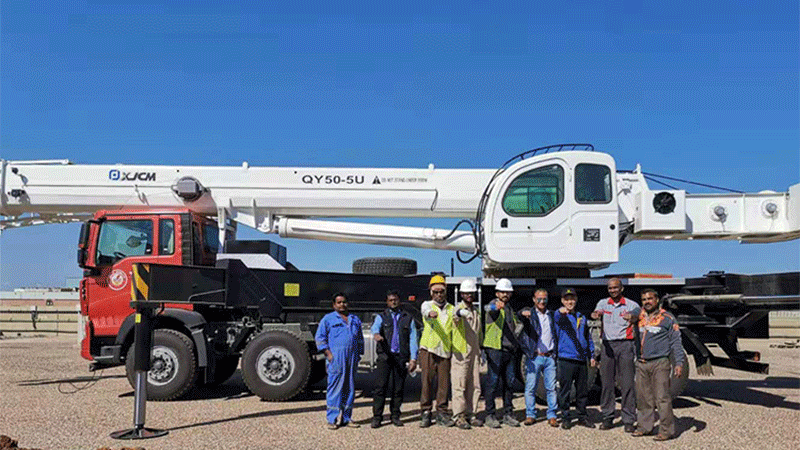Truck-mounted cranes play a critical role in large-scale construction, mining, port, and industrial projects. Their combination of mobility, lifting capacity, and operational efficiency makes them indispensable for enterprises seeking to optimize project timelines and resource allocation. Understanding the technical and operational considerations behind these cranes is essential for informed decision-making.
Engineering and Technical Advantages
Modern truck-mounted cranes are designed with advanced engineering principles to ensure performance, reliability, and safety. Key considerations include:
- Lifting Capacity and Reach: Choose a crane with sufficient lifting capacity and working radius so it meets project requirements while maintaining stability and safe operation.
- Chassis and Powertrain: A robust chassis paired with a high-performance powertrain enhances stability and maneuverability, allowing cranes to operate efficiently on diverse terrains.
- Hydraulic and Control Systems: Integrated hydraulic systems and intelligent control technologies provide precise load handling, smooth operation, and automated safety interventions, increasing both productivity and operational confidence.
Operational Efficiency and Project ROI
The choice of truck-mounted crane significantly affects overall project efficiency and return on investment:
- Optimized Workflow: High-performance cranes reduce setup time and increase lifting speed, allowing projects to meet tight deadlines.
- Labor and Resource Management: Efficient cranes decrease reliance on additional labor or auxiliary equipment, lowering operational costs.
- Lifecycle Value: Durable components, modular designs, and advanced diagnostics extend service life, reduce downtime, and improve total cost of ownership.

Safety and Compliance Standards
Safety is paramount in heavy lifting operations. Modern truck-mounted cranes incorporate multiple protective measures:
- Load Protection and Stability Systems: Overload protection, anti-tilt devices, and automatic limiters minimize risk during operation.
- Regulatory Compliance: Cranes are designed to meet international safety standards and local construction regulations, ensuring legal and operational conformity.
- Risk Management: Integrated monitoring and reporting tools allow project managers to track crane performance and mitigate potential hazards proactively.
Transportation, Maintenance, and Support
Beyond technical capabilities, practical considerations are essential for operational success:
- Ease of Transport and Deployment: Compact designs and modular components facilitate transportation to and from job sites, reducing logistical challenges.
- Maintenance Efficiency: Advanced diagnostic and monitoring systems enable predictive maintenance, reducing unexpected downtime and maintenance costs.
- Comprehensive Support: Access to global technical support, training, and after-sales services ensures cranes maintain peak performance throughout their operational life.
Conclusion
Modern truck-mounted cranes are more than lifting equipment—they are strategic assets that enhance project efficiency, safety, and profitability. By understanding the technical and operational aspects, enterprises can select cranes that align with project demands, optimize resource utilization, and achieve superior outcomes. Partnering with a professional supplier ensures that these cranes deliver reliable, high-performance solutions across diverse industrial applications.



